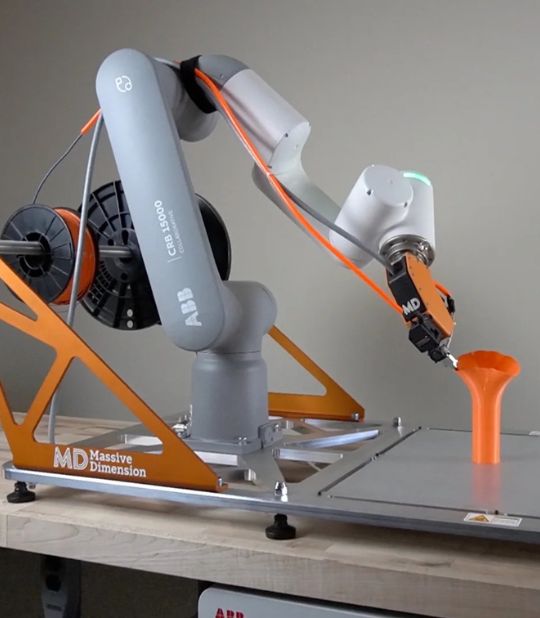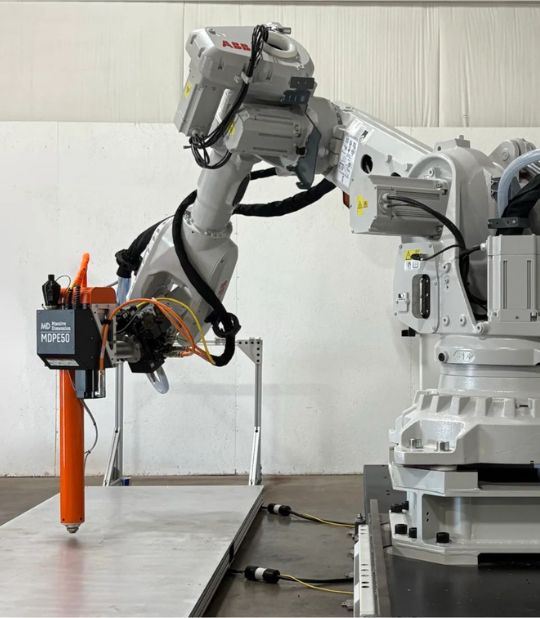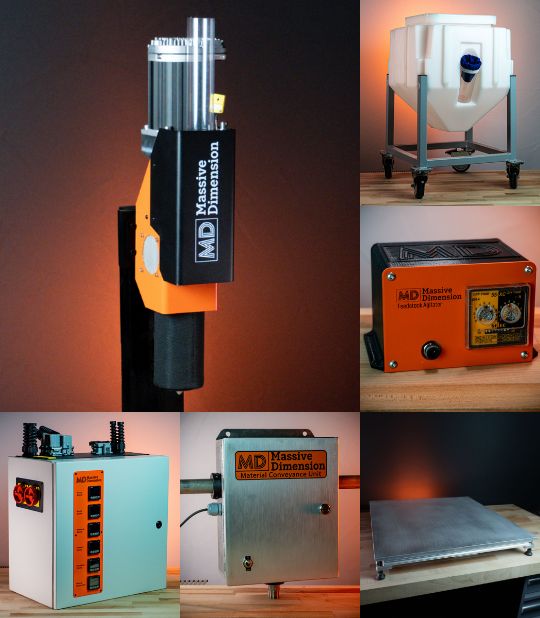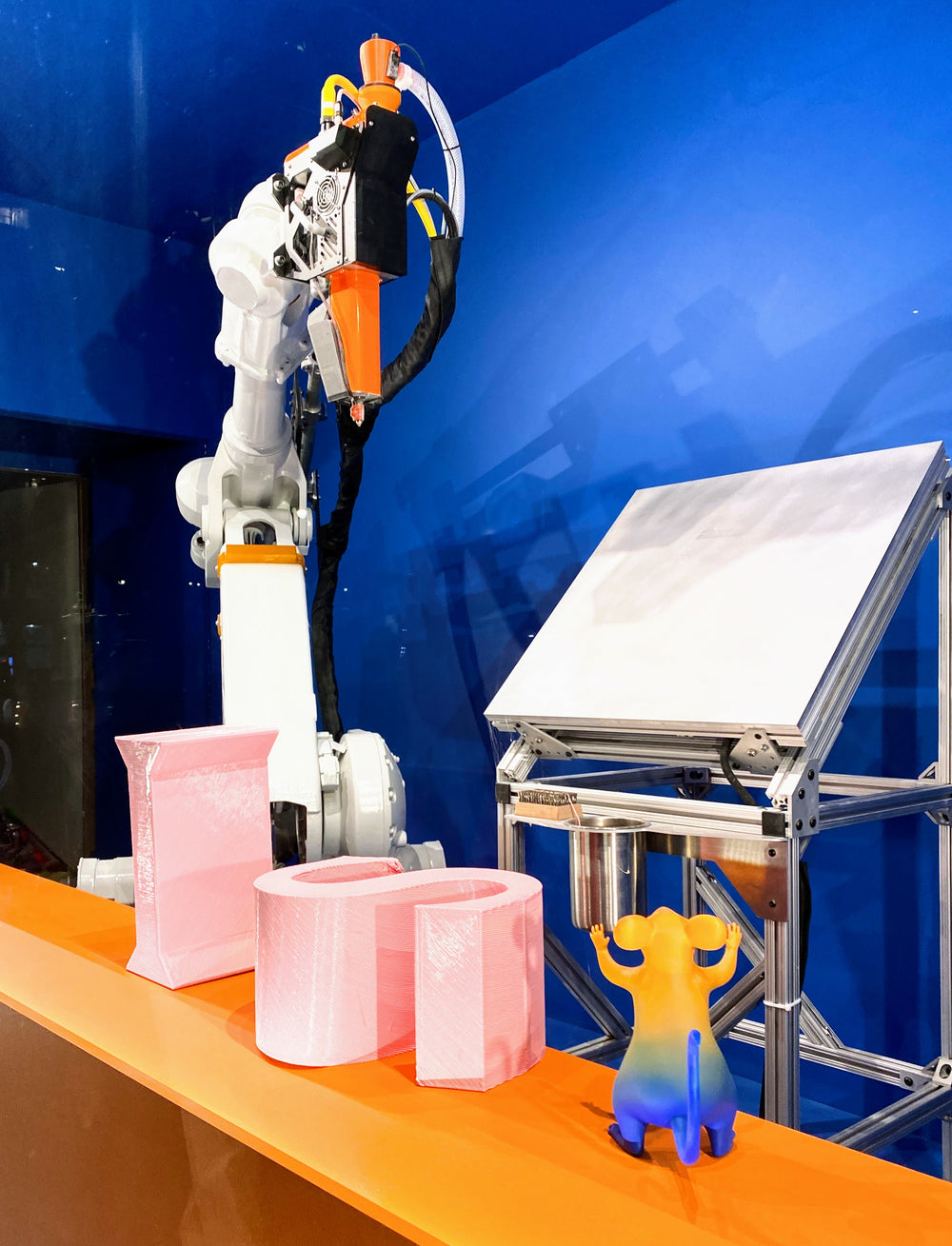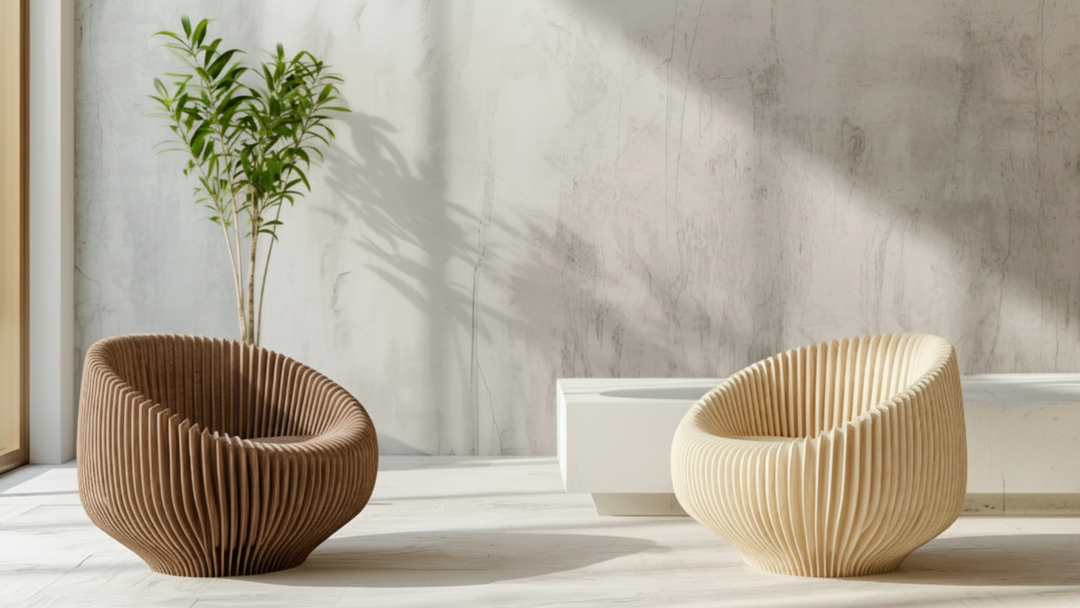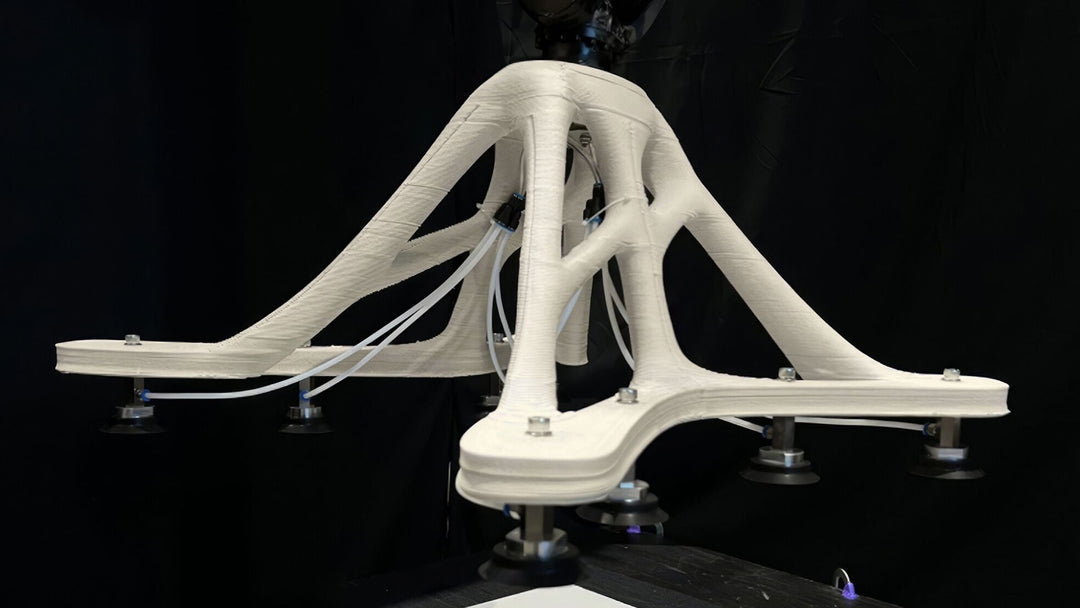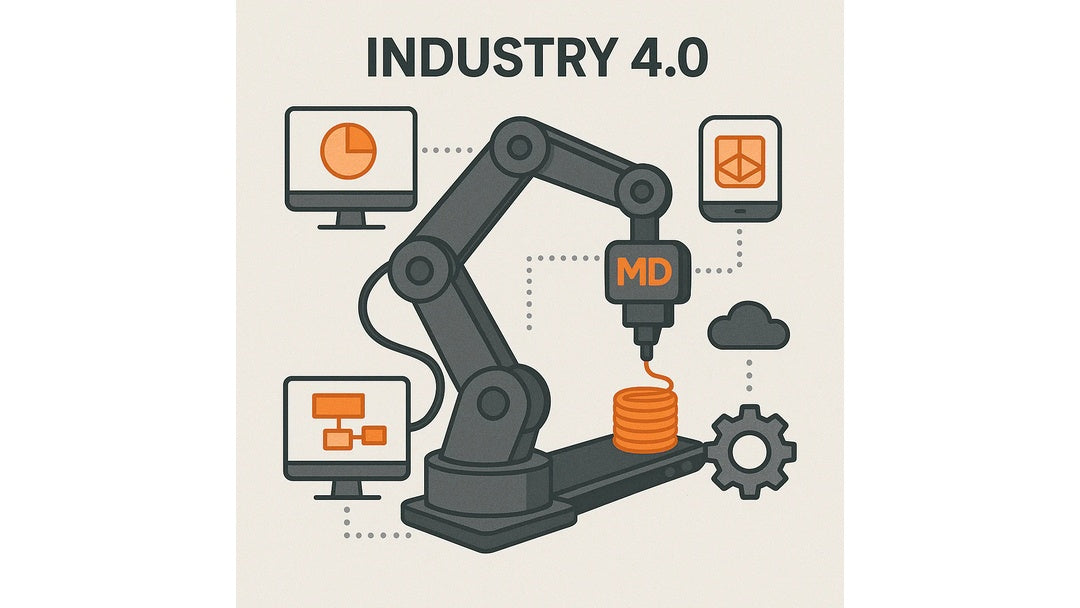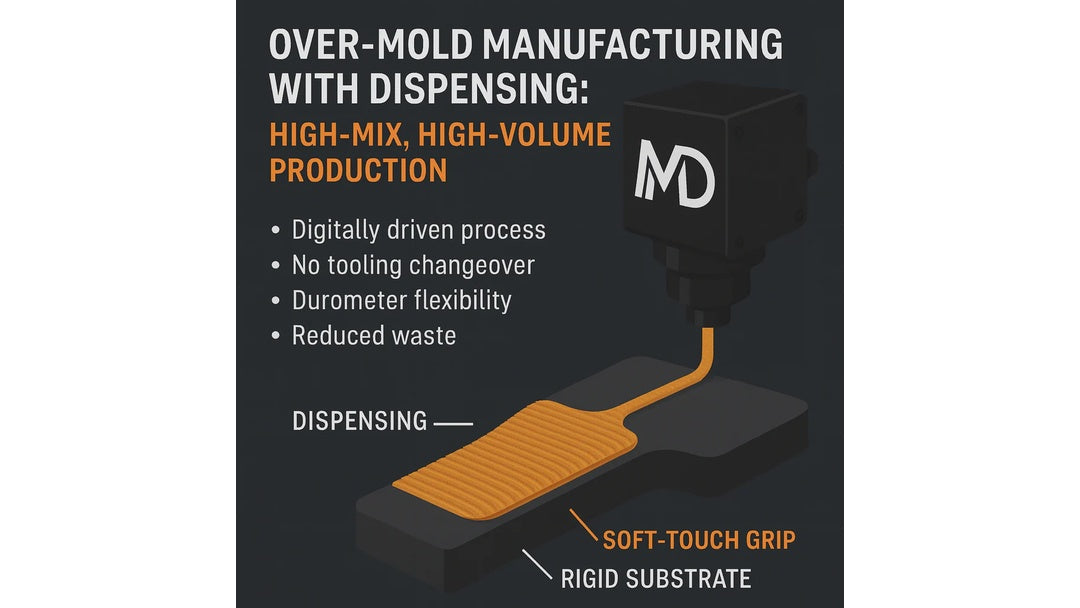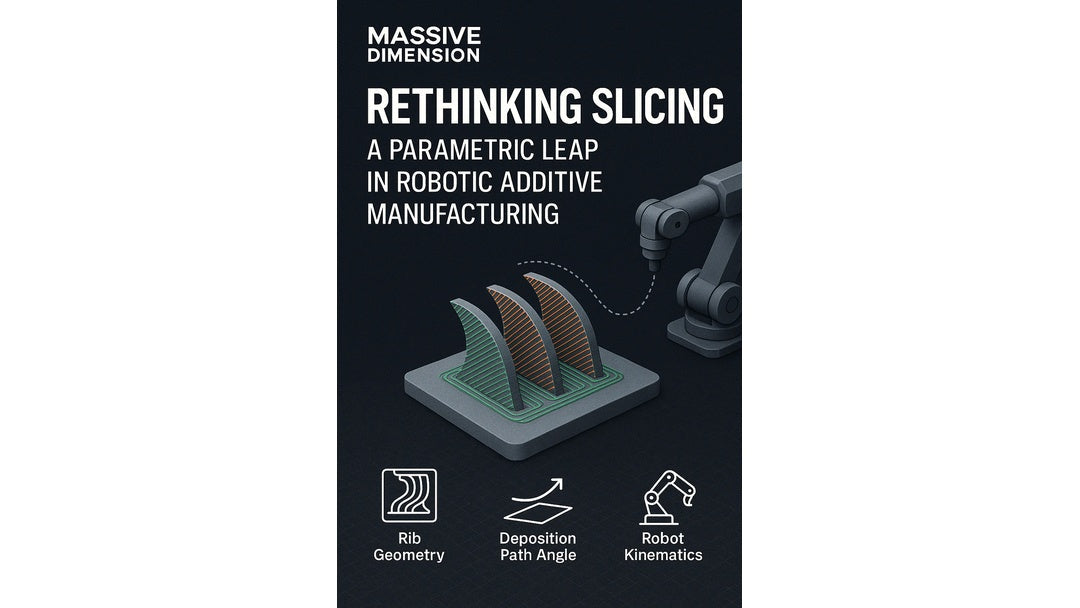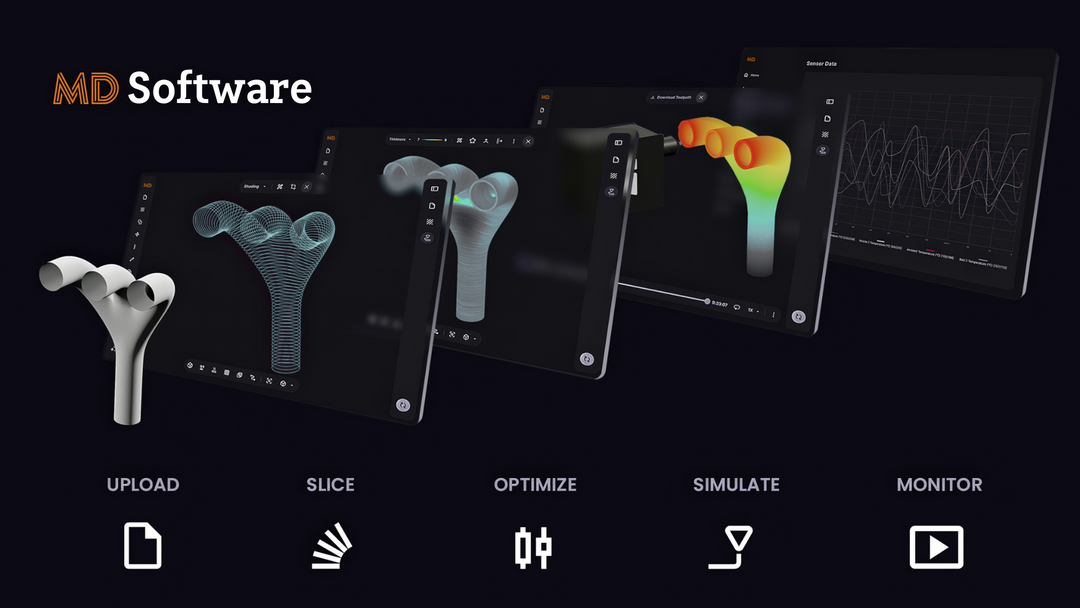University of Utah Update: Large-format Lamp Experiments - Group Spotlight
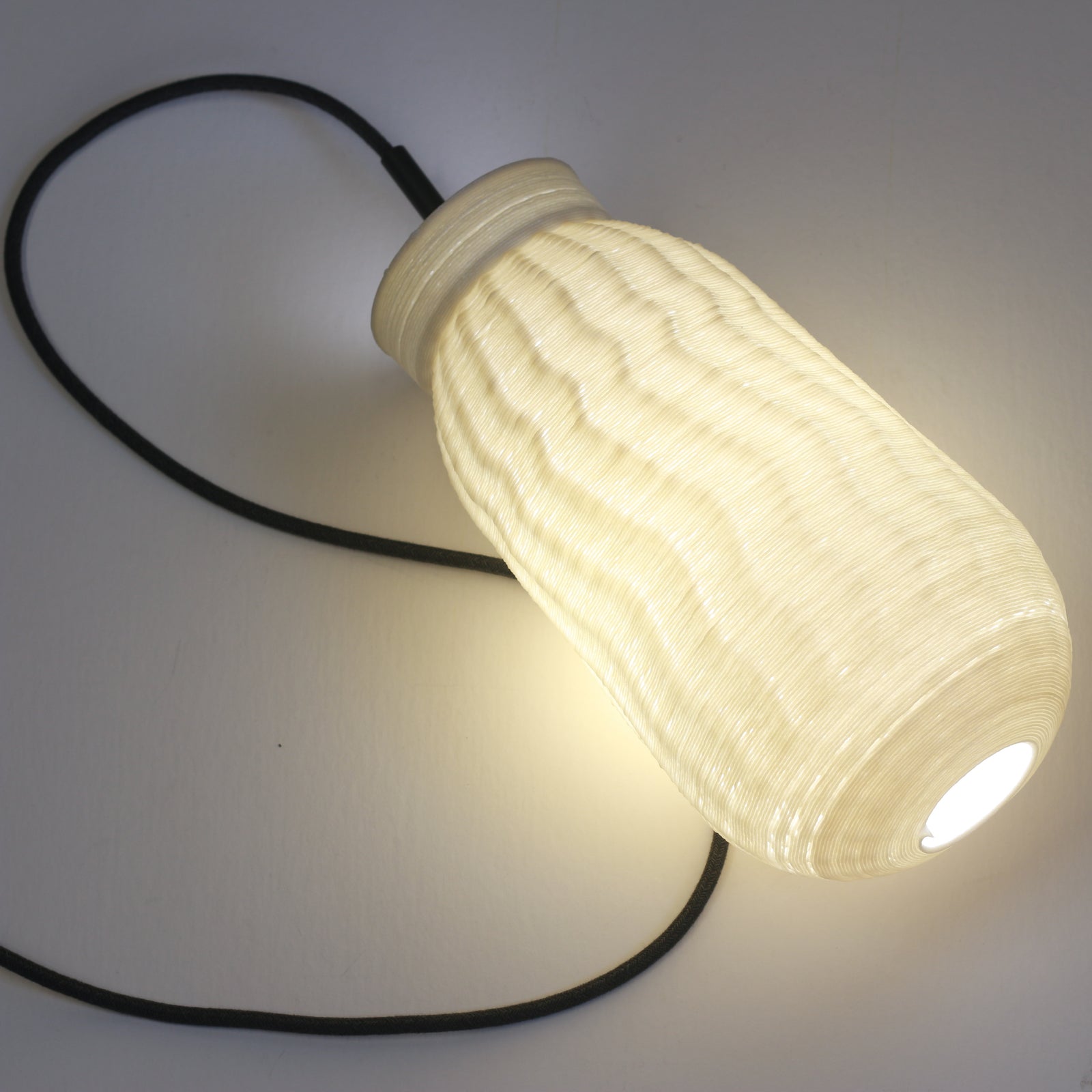
Today we spotlight a group within the Digital Assemblies class within the Design of University of Utah, both to showcase their work and better contextualize and explain the thinking behind the experimental material(s) they created using the Filabot EX2, and the design of the lamp shades printed using the Massive Dimension Pellet Head Extruder.
Drawing upon two distinct but complementary design prompts – for-loops and aleatory methods – this group brainstormed ways to utilize their experimental material in creating a simple lamp.
“Thinking about for-loops, [we] thought of how they work in code. Given some parameter that is true, the code will keep repeating and iterating on that initial parameter each time the loop is executed. [We] thought of the repetitive layer by layer construction by 3D printing, and wondered how one or two simple iterations by each layer could create a form.”
Building upon the for-loops ideas, they incorporated concepts taken from aleatory methods to generate contour curves with randomly-generated ripples:
“A random number generator was used to determine the number of ripples at each point on the lampshade. Starting with 0-10, every generated number sat in the middle of the ten number range going down the lamp. For example: if the previous randomly generated number was 10, the new range was between 5 and 15.”
Combining these ideas, their process began with hand-sketches (image 1), then progressed into digital modeling. Curves were lofted to form their final shape, which was presented in a digital/rendered form for discussion and critique (image 2). A half-scale prototype was printed in their experimental material (image 3) before scaling up to full scale for the final print on the robot arm (image 4).
Group members: @xanderfromtheinternet, Navi and Kelty
Experimental material: Jacquard Pearl Ex Interference Blue powdered pigment in recycled PETG.
Print stats: 13” tall x 7” diameter // 435 grams // 53 minutes
Click here to see all Filabot posts related to the University of Utah/ Binary collaboration.
Click here to see all Massive Dimension posts related to the University of Utah/ Binary collaboration.
Below are some photos from the experiments:
1. Sketches of initial concepts and ideas
2. Digital rendering of the proposed design.

3. Half-scale prototype in experimental material using a desktop 3d printer.

4. Printing the full-scale design using the Massive Dimension Pellet Head Extruder.


5. Final design with lighting.

